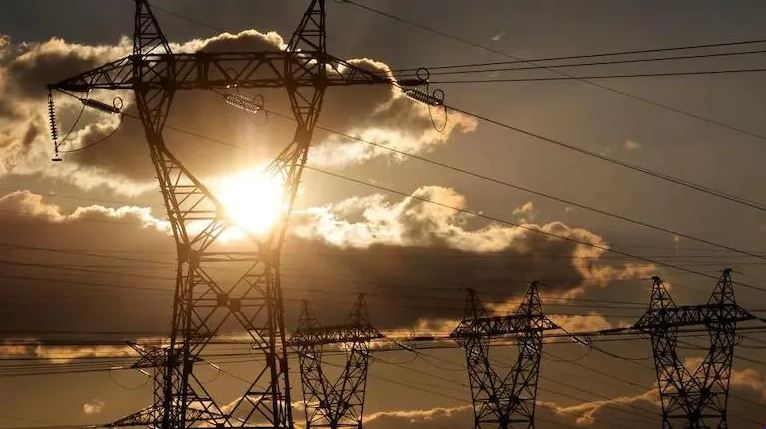The unprecedented heatwaves this year have caused an acute energy shortage, particularly coal that’s the dominant provider, severely impacting the speed of economic rebound needed after the Covid upheaval. The India Meteorological Department (IMD) observes that the number of heatwave days in India has been increasing, from 413 over 1981-1990 to 600 over 2011-2020. The rise in temperatures is attributed to climate change.
According to reports, the maximum all-India power demand crossed a record 201 gigawatt (GW) mark in April as large parts of the country reeled under a heatwave. With a population of more than 1.3 billion, India’s energy needs are set to rise more than any other nation in the next two decades, according to the International Energy Agency (IEA).
Nearly 70 percent of India’s power demand is met by thermal plants. India is the second-largest importer of coal after China. The rise in manufacturing activity after the lockdowns, international price fluctuations, and the Ukraine invasion, all led to the soaring coal prices, and impacted India’s coal imports. Coal stockpiles have been reported the lowest since November 2017, as per data from the Central Electricity Authority (CEA). The utilities sector has been scrambling to get hold of coal supplies that is falling far short of demand. India fell short of domestic coal supply targets to utilities by 7.6 percent in April as a shortage of trains for delivery further exacerbated the crisis.
The crisis has brought the spotlight on energy security. Though the momentum to move to clean energy is building up, the developing world relies on coal because of its abundance as a resource and its relatively lesser expense compared to other energy sources. Six of the world’s 10 largest coal consumers are in the Asia-Pacific region.
It’s a tightrope walk. While the demand for energy is good news for a developing economy, the shortage shows the tough balancing act needed for the economy to build back. To fix the problem, we need sufficient energy to meet our requirements; clean energy to ease global warming; and enhance the grid network with better storage capacities. India has pledged that by 2030, 50 percent of the energy required will be generated from non-fossil sources and 500 GW of renewable energy will be installed. The current crisis shows how urgently we need to get our act together to avoid an energy crisis that jeopardises economic momentum, and to strengthen pathways for clean energy.
Switch to green alternatives
As per a study by the IEA and the Council on Energy Environment and Water (CEEW), acquisitions of renewable energy projects in India rose by 300 percent to $6 billion in the first 10 months of 2021, from $1.5 billion recorded in 2020, reflecting the interest of investors in going green. Delhi’s metro system runs on more than 60% solar power for its daily power needs. India showed remarkable prescience in ramping up steady growth and crossed the 100GW target of installed capacity of renewable energy, despite the pandemic. To explore green hydrogen, the centre launched the National Hydrogen Mission in 2021. As per recent estimates, India has over 1050 GW of renewable potential in wind and solar power energy.
Given the challenge of intermittency of renewables and the likelihood of extreme weather conditions rising, sufficient power reserves are needed for grid resilience. Hydro contributes to about 11% of total power generation followed by wind and solar energy that supply about 8% of the total. As the share of renewables increases, grid flexibility and transmission networks too will evolve. Recycling of solar panels, wind turbine blades and batteries will ensure that renewable energy remains clean right from the start.
Finally, the switch to clean energy must also consider the rehabilitation of communities dependent on coal, especially in the coal belt comprising Jharkhand, Chhattisgarh and Odisha. The good news is that the renewable energy sector in the country has the potential to employ around one million people by 2030, according to a study by CEEW, Natural Resources Defense Council (NRDC) and Skill Council for Green Jobs (SCGJ). There is hope in the green energy transition, that serves both climate goals and the economy.
Ratul Puri
The author is Chairman, Hindustan Powerprojects.
About Ratul Puri,
Former Young Global Leader, World Economic Forum; part of key think tanks in India that are evolving solutions to usher energy sufficiency in India and the Chairman of Board of Hindustan Power, Ratul Puri has pioneered commissioning large scale solar plants in India. With his intrinsic knowledge of coal fired thermal and understanding of the clean energy, he has been advocating adoption of energy mix in India to address its energy demands. Ratul is a regular at World Economic Forum ( WEF) and is an engaged partner with the Forum and is also the Chairman of power committee of CII – Northern Region. He led the discussion on climate resilience during the WEF, 2016 and was the co-chair for the Energy track at the India National Strategy Day driving the innovate financing agenda.
Named CEO of the year by World Brand Congress (2014) & Asian Power Awards (2015), he has been acknowledged for his contribution to the infrastructure sector in India by The Economic Times (2014). Significantly, Ratul’s name was featured amongst the top 21 young leaders in the country who could shape India’s destiny in the 21st century. He has been recognized by the leading Industry bodies and media publications and is widely seen as the industry voice for the Indian power sector.
